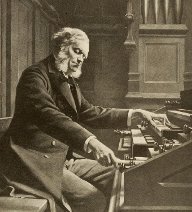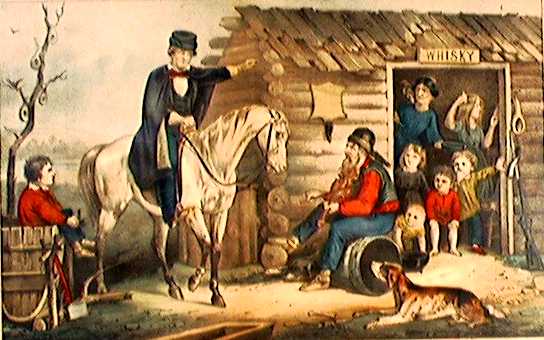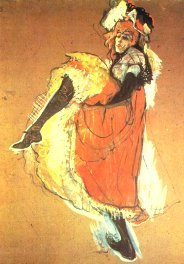Friday 1 May 2009
Traditional Irish air
To begin with, “Danny Boy” is just one of over 100 songs composed to the same tune, the “Londonderry Air”. The author of the famous lyrics
Oh Danny Boy, the pipes, the pipes are calling…
was an English lawyer, Frederic Edward Weatherly (1848–1929), who was also a songwriter and radio entertainer. In 1910 he wrote the words and music for an unsuccessful song he called “Danny Boy”. In 1912 his sister-in-law in America sent him a tune called the “Londonderry Air”, which he had never heard before. He immediately noticed that the melody was perfectly fitted to his lyrics, so he published a revised version of his song in 1913.
Curiously enough, it seems that Weatherly never set foot in Ireland.
Saturday 2 May 2009
Traditional Irish sea shanty
Also known as “What Shall We Do with a Drunken Sailor?”, this is one of the best known of all sea shanties. Such work songs were the only ones allowed in the Royal Navy, and were often sung when raising a sail or raising the anchor.
The melody of this song, which as you may notice is in dorian mode, was taken from a traditional Irish dance and march tune, “Oró Sé do Bheatha ’Bhaile” (translated as “Óró, you are welcome home”). Many versions of the song exist, and its modal melody has suffered many a change.
Sunday 3 May 2009
Bridal Chorus from Richard Wagner's “Lohengrin”
This is the standard march played for the bride's entrance at many formal weddings throughout the Western world. The piece comes from Wagner's opera Lohengrin, but its usual placement at the beginning of a wedding ceremony is not entirely in accordance with its placement in the opera. In the opera, the chorus is sung after the ceremony by the women of the wedding party, as they accompany the heroine Elsa to the bridal chamber.
One curious thing is that the marriage between Elsa and Lohengrin is an almost immediate failure, reaching irretrievable breakdown twenty minutes after the chorus has been sung. However, as we all know, this has failed to discourage the widespread use of the piece.
Monday 4 May 2009
from Mussorgsky's “Pictures at an Exhibition”
This is the first movement, and the unifying device, of the famous suite for piano Pictures at an Exhibition. It has also become known through various orchestrations and arrangements, with Ravel's arrangement being the most recorded and performed.
According to critic Vladimir Stasov, in this piece Mussorgsky depicts himself roving through a picture exhibition, now leisurely, now briskly in order to come close to a picture that had attracted his attention, and at times sadly, thinking of the recently departed painter, who was his friend.
The melody and rhythm resemble Russian folk songs: the piece has simple, strong rhythms in asymmetrical meter. It is to be noted that while the original meter of the movement was a rather uncommon 11/4, published editions usually alternate 5/4 and 6/4.
Tuesday 5 May 2009
Traditional Irish jig
Fast yet quite simple to master.
A word about jigs. This form of lively folk dance was already known in sixteenth-century England, often in 2/4 time, as the term was used for a dancing entertainment in sixteenth century plays. Later the dance began to be associated with music, particularly in 6/8 time. In the seventeenth century the dance was adopted in Ireland and Scotland, where it was widely adapted, and with which countries it is now most often associated. In fact, the jig is second only to the reel in traditional Irish dance.
Wednesday 6 May 2009
National anthem of France
Composed in 1792 by army engineer Claude-Joseph Rouget de Lisle, this song became the rallying call of the French Revolution. It received its name because it was first sung on the streets by volunteers from Marseille upon their arrival in Paris after a young volunteer from Montpellier had sung it at a patriotic gathering in Marseille: the revolutionaries adopted the song and sang it with such fervor as they entered the capital, that the Parisians named it “La Marseillaise”.
Thursday 7 May 2009
by Lewis Granom
Lewis Granom was an English composer and flutist, active during the second half of the 18th century. He wrote many songs and pieces popular in their day.
The siciliano we propose today is a slow 6/8 piece in minor mode.
Friday 8 May 2009
Jeremiah Clarke's “Prince of Denmark's March”
This famous march, popularly known as the “Trumpet Voluntary”, was composed in honor of George, Prince of Denmark, by organist Jeremiah Clarke around 1700. For many years, though, the piece was incorrectly attributed to his elder, and more widely-known, contemporary, Henry Purcell.
The march is very popular as wedding music (it was played during the wedding of Lady Diana Spencer and Prince Charles in St Paul's Cathedral) and was often broadcast by the BBC during World War II, especially when broadcasting to occupied Denmark. It is also used as the march of the Nobel prize laureates at the Nobel ceremonies in Stockholm on December 10 every year.
Saturday 9 May 2009
Traditional Hebrew folk song
The title of this well-known Jewish song of celebration means ‛Let us rejoice’.
The peculiar sound of the song comes from the use of the phrygian dominant scale, which is constructed by raising the third of the phrygian mode. Thus, this scale is like a natural minor scale with a minor second and a major third, and that's what makes it unusual, as the interval between the second and third degrees is an augmented second.
Sunday 10 May 2009
aka “I Wish I Was in Dixie” or “Dixie's Land”

Yes, that's the car horn tune of General Lee, from The Dukes of Hazzard. It is one of the most distinctively American musical products of the 19th century. Although not a folk song at its creation, “Dixie” has since entered the American folk vernacular. It likely cemented the word “Dixie” in the American vocabulary as a synonym for the Southern United States.
Most sources credit Ohio-born Daniel Decatur Emmett with the song's composition, though many other people have claimed to have composed “Dixie”. Over his lifetime, Emmett often recounted the story of its composition, but details vary with each account. For example, in various versions of the story, Emmett claimed to have written “Dixie” in a few minutes, in a single night, and over a few days.
Monday 11 May 2009
Dvořák's Largo from Symphony No. 9 “From the New World”
This wonderful symphony was composed by Antonín Dvořák in 1893 during his three-year visit to the United States. It is by far his most popular symphony, and one of the most popular in the modern repertory.
Dvořák was interested in the Native American music and African-American spirituals he heard in America. However, as the Composer himself explained: “I have not actually used any of the [Native American] melodies. I have simply written original themes embodying the peculiarities of the Indian music, and, using these themes as subjects, have developed them with all the resources of modern rhythms, counterpoint, and orchestral color.”
At the Ninth Symphony's premiere in New York the reception was one of perpetual cheering: the end of every movement was met with thunderous clapping and Dvořák felt obliged to stand up and bow.
Tuesday 12 May 2009
aka “The Banshee”
Here's another Irish reel. This is one of the best for beginners, as it is quite simple to learn and to get up to speed. It it said to have been composed by James McMahon, a flute player who lived in Belfast and played an ivory flute.
This tune goes well with The Wind that Shakes the Barley.
Wednesday 13 May 2009
from J.S. Bach's Orchestral Suite No. 3
Johann Sebastian Bach composed his Orchestral Suite No. 3 in D major, BWV 1068, for his patron Prince Leopold of Anhalt sometime between the years 1717 and 1723.
The name “Air on the G String” comes from violinist August Wilhelmj's late 19th-century arrangement of the piece for violin and piano. By transposing the key of the piece from its original D major to C major and transposing the melody down an octave, Wilhelmj was able to play the piece on only one string of his violin, the G string. The name “Air on the G String”, however, has today more or less taken the meaning of any arrangement of Bach's Air.
Thursday 14 May 2009
from Handel's “Water Music”
The Water Music is a collection of orchestral movements, often considered as three suites, composed by German-English composer George Frideric Handel. It premiered in the summer of 1717, when King George I requested a concert on the River Thames. The concert was performed by 50 musicians playing on a barge close to the royal barge from which the King listened with some close friends. George I was said to have loved it so much that he ordered the exhausted musicians to play the suites three times on the trip.
Many portions of the Water Music have become familiar. The D major movement in 3/2 meter titled “Alla Hornpipe” is particularly notable and has been used frequently for television and radio commercials.
Friday 15 May 2009
Franz Schubert's “Die Forelle”
In this well-known song, Schubert sets a poem by Christian Friedrich Daniel Schubart about a man catching a trout in a stream. It is perhaps the most celebrated of all Schubert's Lieder, even though there are well-known and much loved songs which are more profound and more moving. There is a freshness, a zest, an innocence about this music which has hooked its listeners since the song was composed. It has the memorability of a folksong, a type of melodic inevitability that only the great tunesmiths can achieve.
Saturday 16 May 2009
Johannes Brahms' “Wiegenlied“, Op. 49
Lullaby and good night, with roses bedight
With lilies o'er spread is baby's wee bed
Lay thee down now and rest, may thy slumber be blessed
Lay thee down now and rest, may thy slumber be blessed
Lullaby and good night, thy mother's delight
Bright angels beside my darling abide
They will guard thee at rest, thou shalt wake on my breast
They will guard thee at rest, thou shalt wake on my breast
Sunday 17 May 2009
by César Franck, from “Messe à trois voix”

César Franck, a Belgian composer, organist and music teacher who lived in France, was one of the great figures in Romantic music in the second half of the 19th century. One of his best known works is the motet setting “Panis Angelicus”, which was originally written for tenor solo with organ and string accompaniment; later arranging it for tenor, chorus, and orchestra, he incorporated it into his Messe solennelle Opus 12.
“Panis angelicus” (Latin for ‛bread of angels’) is the penultimate strophe of the hymn Sacris solemniis written by Saint Thomas Aquinas for the Feast of Corpus Christi.
Make sure you give a good listen to the accompaniment. The organ part of this piece is simply amazing!
Monday 18 May 2009
from Alessandro Marcello's Oboe Concerto in D minor
Alessandro Marcello was a Venetian nobleman who excelled in various areas, including poetry, philosophy, mathematics and, most notably, music. This concerto he wrote in D minor for oboe, strings and basso continuo is perhaps his best-known work. Its worth was attested to by Johann Sebastian Bach, who transcribed it for harpsichord (BWV 974).
The central movement, in particular, is a deeply-felt adagio which aspires to genuine pathos. As such, it has been used effectively in many movies, like The Hunger (with David Bowie and Susan Sarandon), The Firm (with Tom Cruise and Gene Hackman) or the more recent The House of Mirth.
Tuesday 19 May 2009
Traditional English march
This is the most famous marching song for the grenadier units of the British military. Its tune dates from the seventeenth century, and is also used for another traditional English song, ”The Gentleman Soldier“.
“The British Grenadiers” is played in many films: most notably, you can hear it in Stanley Kubricks's Barry Lyndon, in The Patriot and even in The Italian Job.
A hint: if you want it to sound really suggestive, you'd better transpose the melody up an octave... or play it on a piccolo if you have one!
Wednesday 20 May 2009
Traditional Irish Reel
By the way, Donegal is a town in County Donegal, in the Province of Ulster, in Ireland. You know… at the mouth of Donegal Bay!

Thursday 21 May 2009
aka “Thunder and Blazes”
This is actually a military march composed in 1897 by the Czech composer Julius Fučík. He originally titled it “Grande Marche Chromatique”, reflecting the use of chromatic scales throughout the piece, but eventually changed the title based on his personal interest in the Roman Empire.
In 1910 Canadian composer Louis-Philippe Laurendeau arranged “Entrance of the Gladiators” for a small band under the title “Thunder and Blazes”, and sold this version throughout North America. It was during this period that the song gained lasting popularity as a screamer march for circuses, often used to introduce clowns.
Friday 22 May 2009
by Ludwig van Beethoven
The écossaise is a variety of contredance (a folk dance in which couples dance in two facing lines) in a Scottish style, characterized by a very proud rhythm. It was especially popular in France and England at the end of the 18th century and at the beginning of the 19th.
As a musical form it was used by some classical composers like Franz Schubert, Ludwig van Beethoven and Frédéric Chopin, who wrote a number of écossaises for the piano which are recognized for their liveliness.
Saturday 23 May 2009
by Jacques Hotteterre
Jacques Hotteterre is regarded as one of the most outstanding French musicians of the baroque period. He was the most celebrated of a family of wind instrument makers and wind performers.
Hotteterre owed his fame largely to his talent playing the flute, an instrument for which he wrote a number of pieces, significantly extending the repertory for the instrument. In addition, he played the bassoon, oboe, and musette (French bagpipe). He was also an internationally celebrated teacher to aristocratic patrons, and he wrote a few methods for the transverse flute.
In addition to performance and teaching, Hotteterre continued his family's tradition of wind instrument making. It may have been Hotteterre who made a number of changes in the design of the transverse flute, though there is little concrete evidence for this. Most notably, the flute, which had previously been made in one cylindrical piece, was cut in three pieces: the head, the body and the foot.
Sunday 24 May 2009
Traditionally attributed to Johann Sebastian Bach
Anna Magdalena Bach, Johann Sebastian's wife, was presented with the famous Notebook by her husband in 1725. He started her out with a fine gift of two partitas, and left the rest blank for her to collect compositions herself. The Musette in D major, BWV Anh. 126, is one of those collected compositions. Because all the entries are anonymous, it is impossible to know for certain whether or not J.S. Bach actually composed this brief, simple musette. Certain things about it, most notably its somewhat boisterous mood, suggest the work of one of Johann Sebastian's sons. The boisterousness chiefly manifests itself in witty alternations between broken octave bass accompaniment and unison in the statement of the perky theme, and some tricky, less-than-completely sweet harmonies in the contrasting material.
In this transcription for the modern C flute we kept the original key of D major, but we had to raise the last note by an octave.
Monday 25 May 2009
from Sir Edward Elgar's Pomp and Circumstance March No. 1
The music to which the words of the refrain “Land of hope and glory…” are set is the Trio theme from Sir Edward Elgar's Pomp and Circumstance March No. 1. The words were fitted to the melody on the suggestion of King Edward VII, who told Elgar he thought the melody would make a great song. When Elgar was requested to write a work for the King's coronation, he worked the suggestion into his Coronation Ode, for which he asked the poet and essayist A. C. Benson to write the words. The last section of the Ode uses the march's melody.
In the USA and Canada this march is also known as “The Graduation Song”, as it is played at graduation ceremonies. This custom was created when Elgar was awarded an honorary doctorate at Yale University, and the orchestra performed Pomp And Circumstance March No. 1 for the ceremony.
Tuesday 26 May 2009
Traditional Scottish march
“Scotland the Brave” (in Scottish Gaelic, Alba an Aigh) is a patriotic song, one of the main contenders to be considered as a national anthem of Scotland. The song is used to represent Scotland in the Commonwealth Games (incidentally, to be hosted in Glasgow in 2014).
Remember Braveheart?

Wednesday 27 May 2009
by Marc-Antoine Charpentier

This tune has recently become famous as the theme music for the broadcasting of the European Broadcasting Union. It is well known to Europeans as it is played before and after the Eurovision Song Contest and other important events.
Thursday 28 May 2009
from Gluck's “Orfeo ed Euridice”
The gently pastoral “Dance of the Blessed Spirits” beautifully exemplifies Gluck's revolutionary principle that music and poetry should never overstate their message: any complexity needs to be justified by essential dramatic content. Listeners will perhaps be astonished to hear this tranquil music in an opera about Orpheus' journey to Hades, the realm of the dead, in search of his departed wife Eurydice. In fact, in Act II of Gluck's great opera Orfeo ed Euridice, the “Dance of the Blessed Spirits” immediately follows the “Dance of Furies”, the vengeful spirits of Hades. Indeed, Greek mythology located Elysium, the world of the blessed, far from Hades. Gluck, however, follows the Homeric tradition, which places Elysium in the Underworld.
Written for solo flute with string accompaniment, this piece is in simple ternary form (ABA), the first part being an elegant, stately melody that conjures up images of pastoral tranquility under resplendent azure skies. The contrasting part that follows introduces an element of anguish that is perhaps an echo of the protagonist's earlier dialog with the Furies. However, as the first section is reiterated, the idyllic landscape reappears, perhaps suggesting that Orpheus' quest will be successful.
Friday 29 May 2009
by Colonel Sanford C. Faulkner
A tune, a dialog, and a painting from the mid-nineteenth century, the “Arkansas Traveler” became a catch-all phrase for almost anything or anyone from Arkansas: it has been the name of a kind of canoe, various newspapers, a racehorse, a baseball team, and more.
The Arkansas-based version of the Traveler is said to have begun in 1840. Colonel Sandford Faulkner got lost in rural Arkansas and asked for directions at a humble log home. Faulkner, a natural performer, turned the experience into an entertaining presentation for friends and acquaintances in which the Traveler was greeted by the Squatter at the log cabin with humorously evasive responses to his questions. Finally, the Traveler offered to play the second half, or turn, of the tune the Squatter was playing on his fiddle. The tune was “The Arkansas Traveler”. In his happiness at hearing the turn of the tune, the Squatter mustered all of the hospitality of his household for the benefit of the Traveler. When the Traveler again asked directions, the Squatter offered them but suggested that the Traveler would be lucky to make it back to the cottage “whar you kin cum and play on thara’r tune as long as you please.”

Saturday 30 May 2009
Jesús González Rubio's “Jarabe tapatío”
This musical piece, actually a medley of Mexican folk music, was composed in the 19th century by a professor of music in Guadalajara, J.G. Rubio.
In its standardized form, the song was first choreographed by the Mexican Felipa Lopez in the early twentieth century to celebrate a government-sponsored fiesta that commemorated the successful end of the Mexican Revolution.
Since then it has become a folk dance popular throughout Mexico and the Southwestern United States as a symbol of the national pride and honor of the Mexican people.
In 1924, Secretary of Education José Vasconcelos proclaimed the “Jarabe tapatio” to be Mexico’s national dance and decreed that it would be taught throughout the Mexican public school system as a symbol of Mexican identity, designed to supersede any local dance traditions and bind together the ethnically diverse.
Sunday 31 May 2009
Jacques Offenbach's “Galop infernal“ from “Orpheus in the Underworld”

Offenbach's operetta Orpheus in the Underworld (Orphée aux enfers) is an irreverent parody and scathing satire on Gluck's Orfeo ed Euridice, culminating in this well-known “galop infernal” which has often been copied and has widely been used as the background music for the can-can dance.
The can-can is regarded today primarily as a physically demanding music hall dance, performed by a chorus line of female dancers who wear costumes with long skirts, petticoats, and black stockings, that hearkens back to the fashions of the 1890s. The main features of the dance are the lifting up and manipulation of the skirts, with high kicking and suggestive body movements.
As you will notice, the main theme is first presented in G major, and then reiterated in D major.






